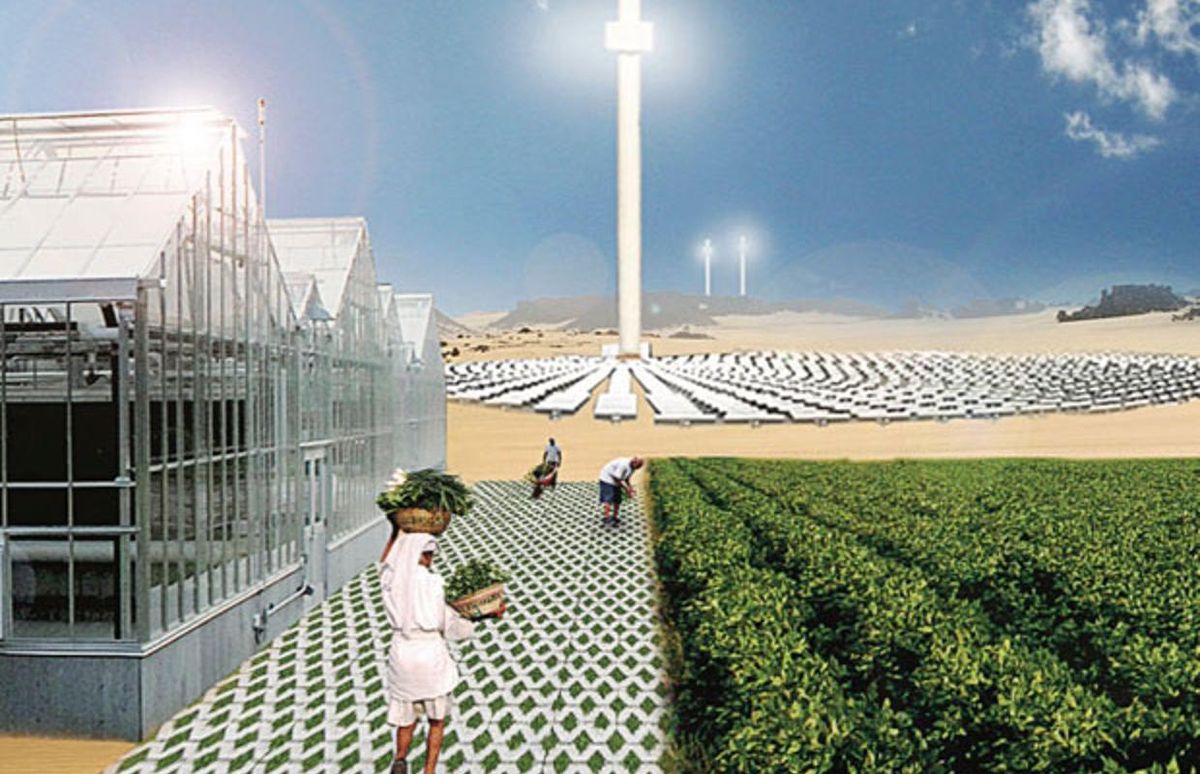THE INSTITUTEA warm climate is ideal for farming, but many of the world’s warmest and sunniest countries, including those in the Middle East, North Africa, and Southeast Asia, don’t have power grids reliable enough to sustain industrial greenhouses with complex heating, cooling, and watering systems.
That’s why the founders of Solho, a green energy startup in Delft, the Netherlands, are working on a solar energy system that could support a greenhouse untethered from the electric grid. They are developing the Sprhout, a solar-powered horticultural off-grid system that is designed to harness heat from the sun and then convert that heat to electricity to power a greenhouse’s heating, cooling, and irrigation. The system will use automation software that will allow remote control, the company says.
Solho was selected as an IEEE N3XT Star at the Engineering Innovation Summit, held in December in Brussels. The program seeks ventures with engineering-driven innovation at their core that align with IEEE’s mission to advance technology for humanity. It connects startups with technical experts, funding sources, strategic partners, and news media exposure.
HOW THE SYSTEM WORKS
Solho was founded last year by a trio of engineers specializing in green technologies: IEEE Members Emiliano Casati, Adriano Desideri, and Adam Head. They had developed the Sprhout concept in 2015 as a side project of their graduate studies.
They’ve partnered with Van der Hoeven, one of the largest Dutch greenhouse manufacturers, to build a prototype that will power a greenhouse in Avignon, France. The project is partially funded by South Holland, a Netherlands province where Delft is situated that allocates funds for local startups.
“We chose to test our system in the south of France because that area gets enough sunlight to help us prove that our solar-powered system will work,” Desideri says.
Next to the greenhouse will be 200 square meters of solar thermal collectors—flat panels that absorb sunlight. The collectors will feed a thermal energy storage system able to power a 300-square-meter greenhouse 24 hours a day. Eventually, Solho wants to scale up to a system that can power a 5-hectare space.
The application of solar thermal power allows such greenhouses to operate completely off the power grid, Desideri notes.
In future versions, he says, seawater will be pumped to the greenhouse site, collected, and passed through a desalination system, with the clean water distributed through the greenhouse’s irrigation system. Software will automatically control the power distributed to the greenhouse’s heating and cooling systems as well as its desalination plant, he adds. Farmers won’t have to carry out daily maintenance on the Sprhout, he says.
The company hopes to test its first prototype by August. Once that’s finished, Solho plans to scale up and start building a 1,000-square-meter test facility in North Africa or Saudi Arabia, where it can incorporate automation software and desalination. The company aims to make its technology available commercially by 2020.
GETTING A LEG UP
The Netherlands is a leading developers of greenhouses, with some covering up to 70 hectares. Although it’s a small country–less than 42,000 square kilometers, and with a population of just more than 17 million—it’s the second largest exporter of food as measured by value, according to National Geographic. The No. 1 exporter in terms of value is the United States, which has more than 270 times the Netherlands’s land mass.
Working in a country committed to sustainable agriculture means that Solho has no shortage of support. Solho joined the Yes! Delft Innovation Program in June. The six-month training program for technology startups helps entrepreneurs research their potential customer base, validate their ideas, and seek funding. More than 200 companies have benefited from the program.
Solho received a number of accolades last year. In September it was named one of the Top 10 Clean Tech Startups at the Shell EnergyFest, an event in Amsterdam where founders pitch their businesses to venture capitalists as well as potential customers. And in November, it was among four winners of the first European Union Top 50 millennial startup competition, which took place during a conference at the European Innovation Summit in Brussels. The EU chose 50 startups working on solutions to some of Europe’s most pressing challenges and invited them to Brussels to pitch their ideas to investors, policymakers, and representatives from local companies.
Solho has partnered with a number of organizations including greenhouse makers and Climate-KIC, a European initiative dedicated to mitigating the effects of climate change.
“These partnerships have allowed us to access real-time data and information about high-tech greenhouse technologies usually not available to the public,” Desideri says. “We all have a background in energy, but to really understand the agriculture industry, we needed to work with greenhouse companies to identify the problems that must be solved.”
